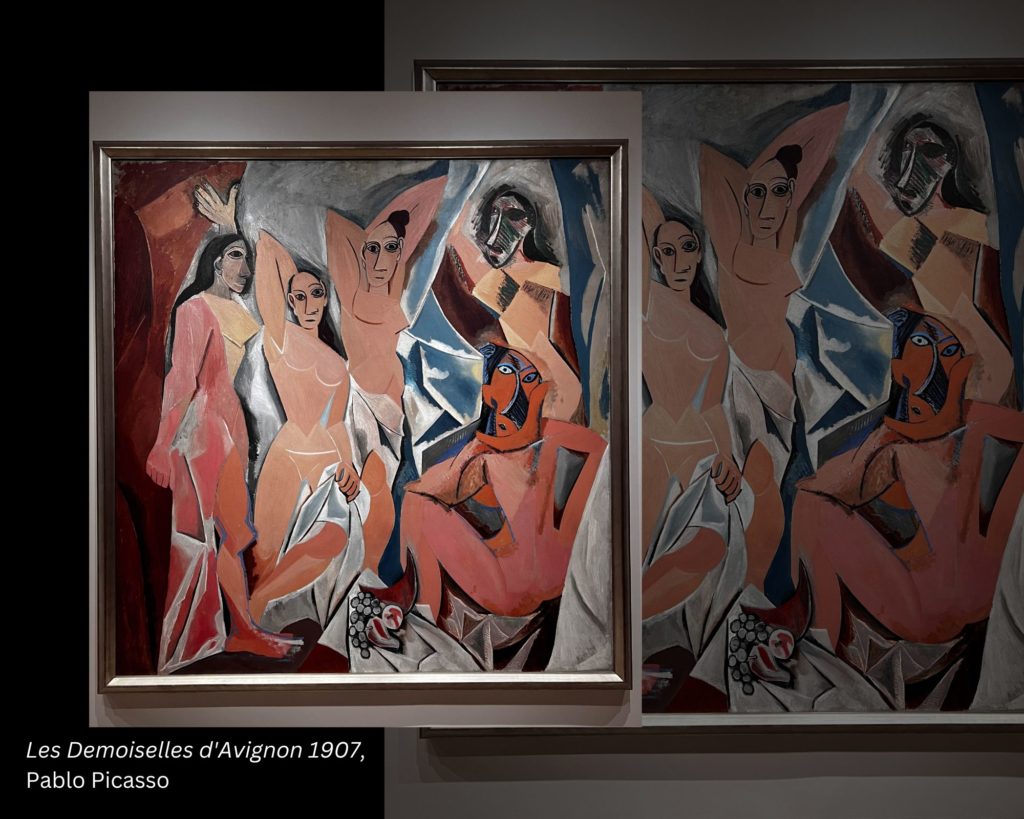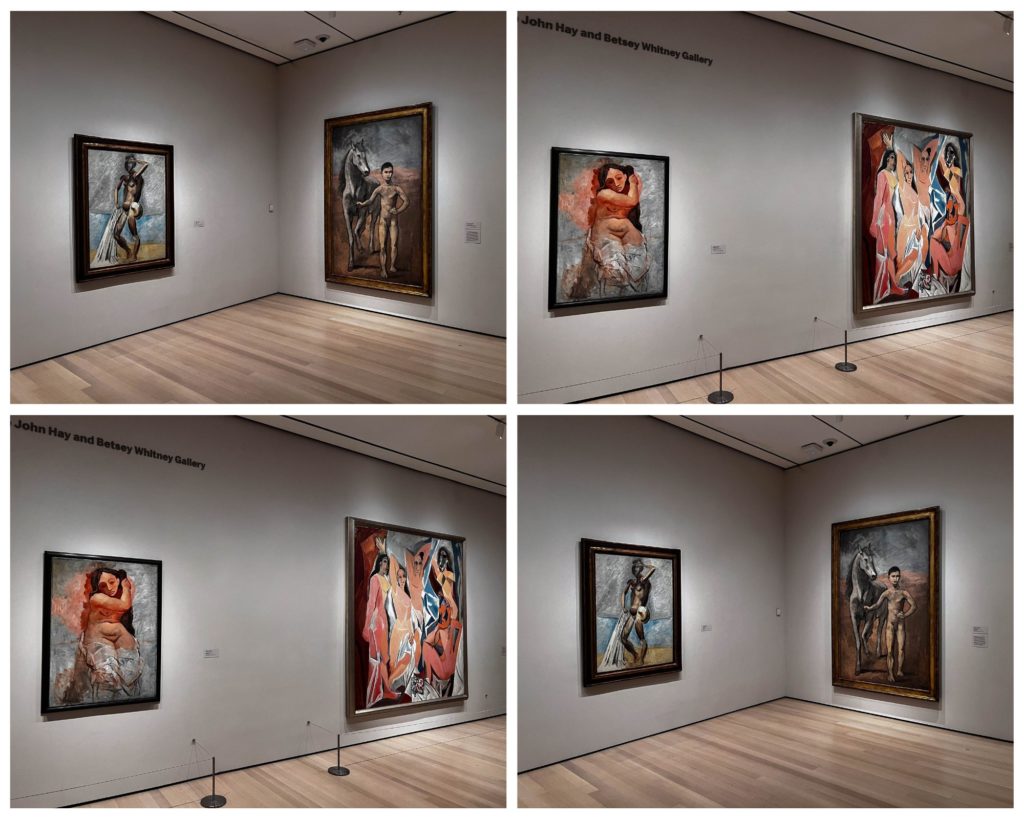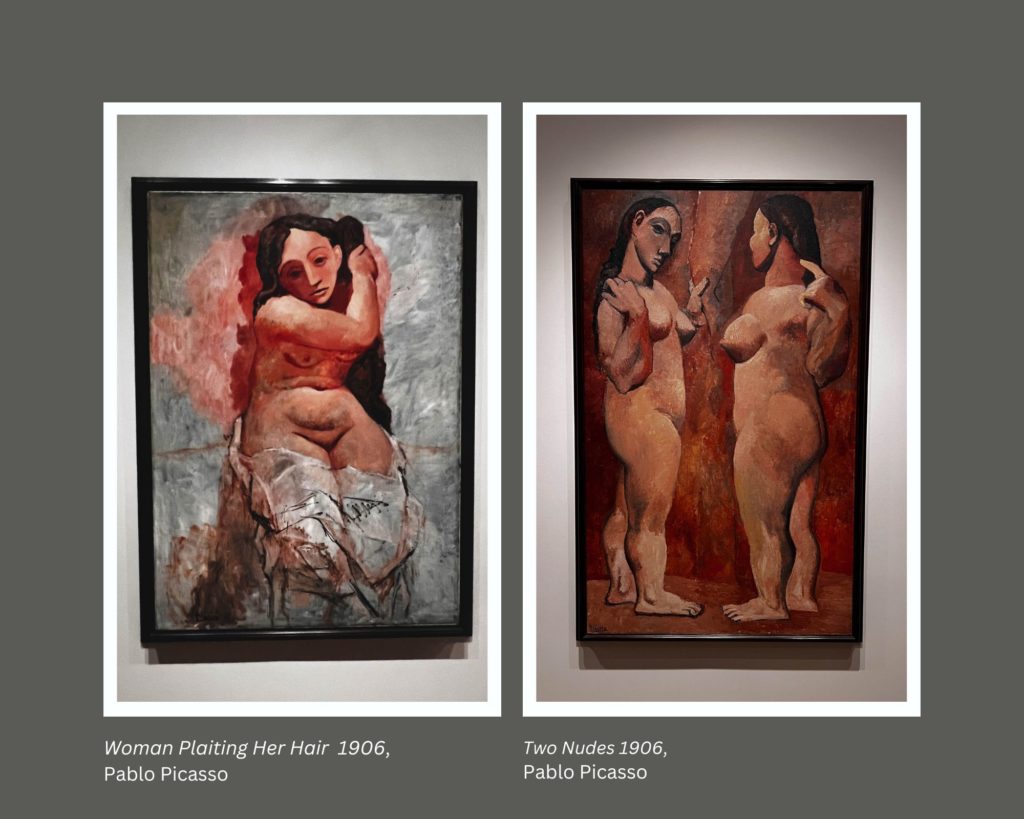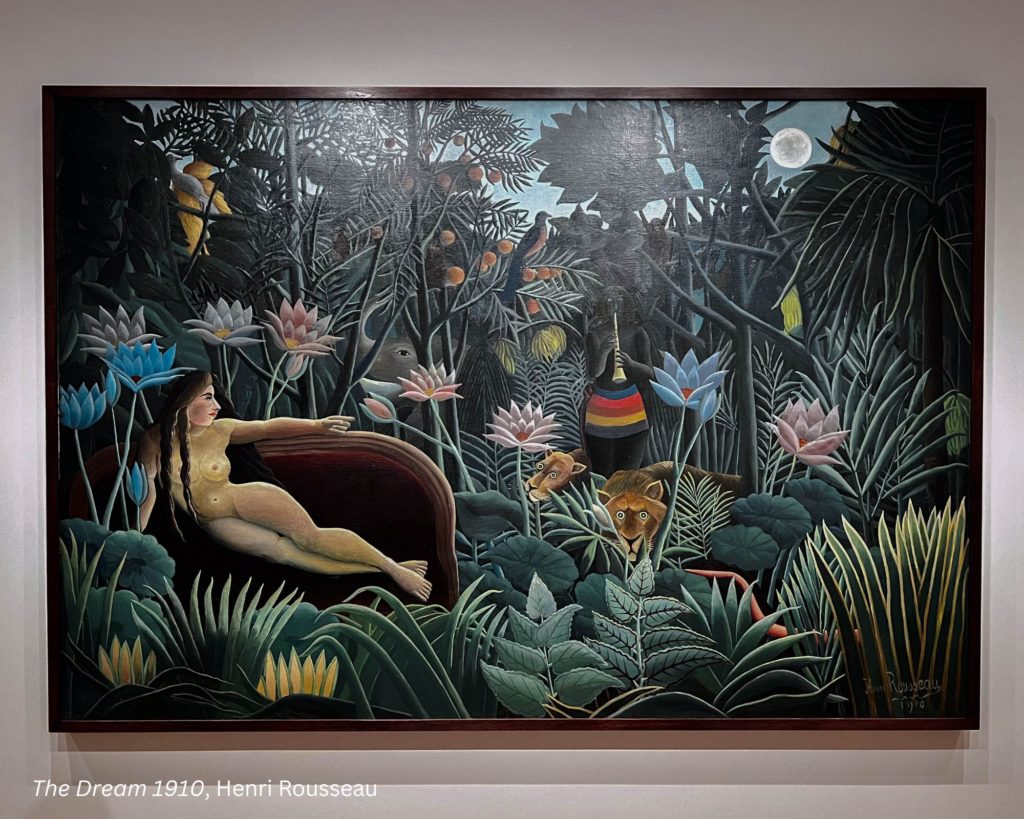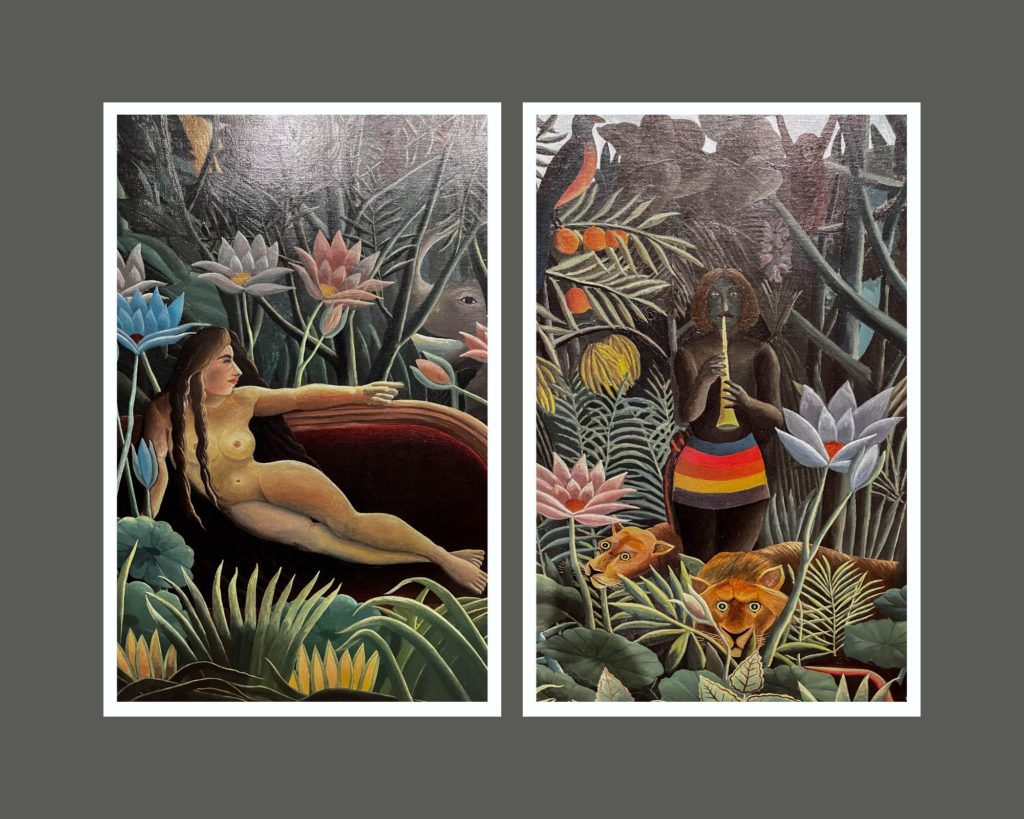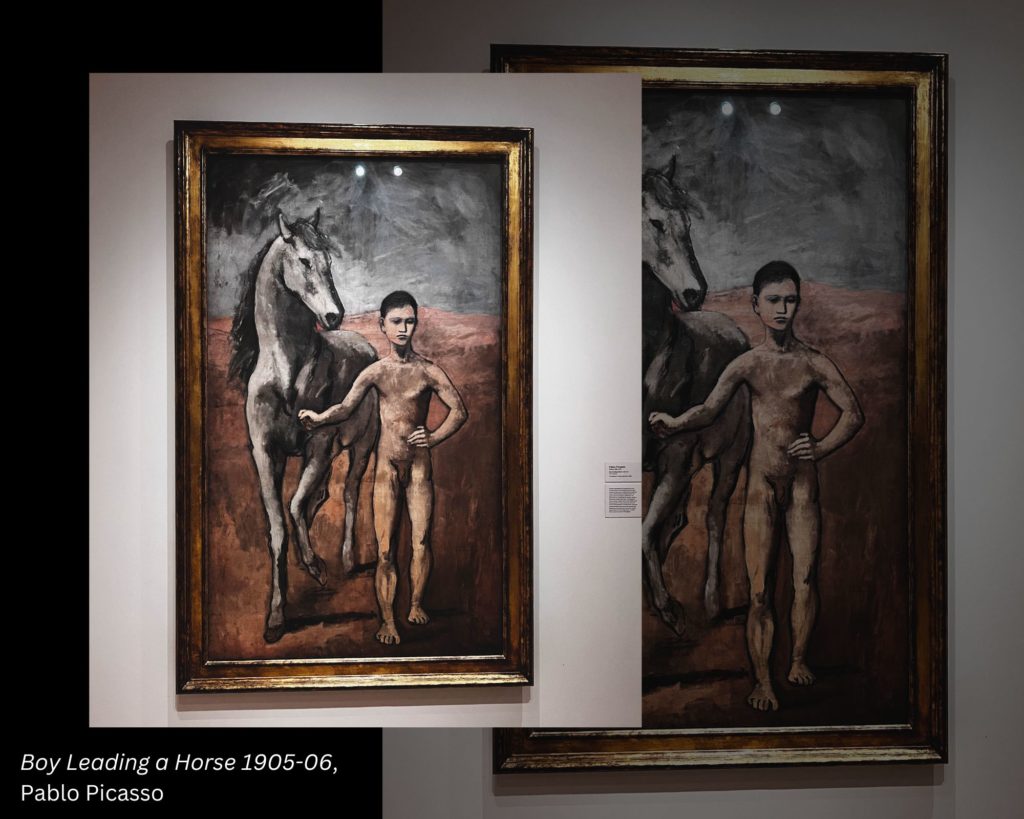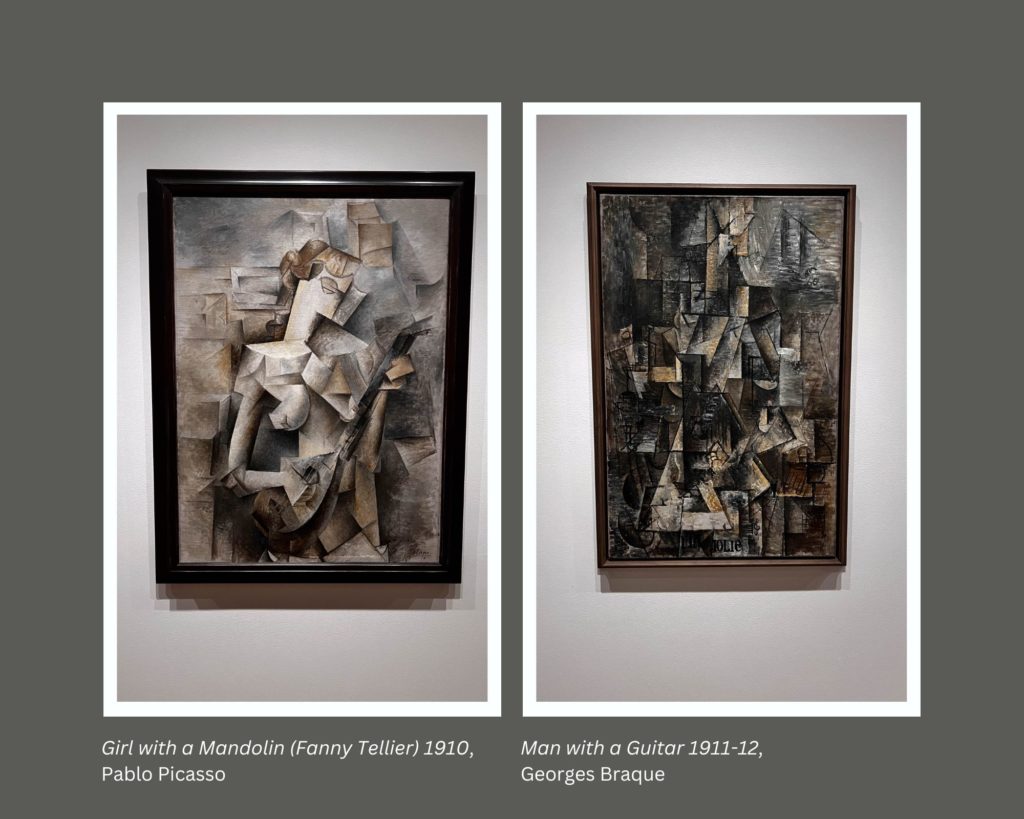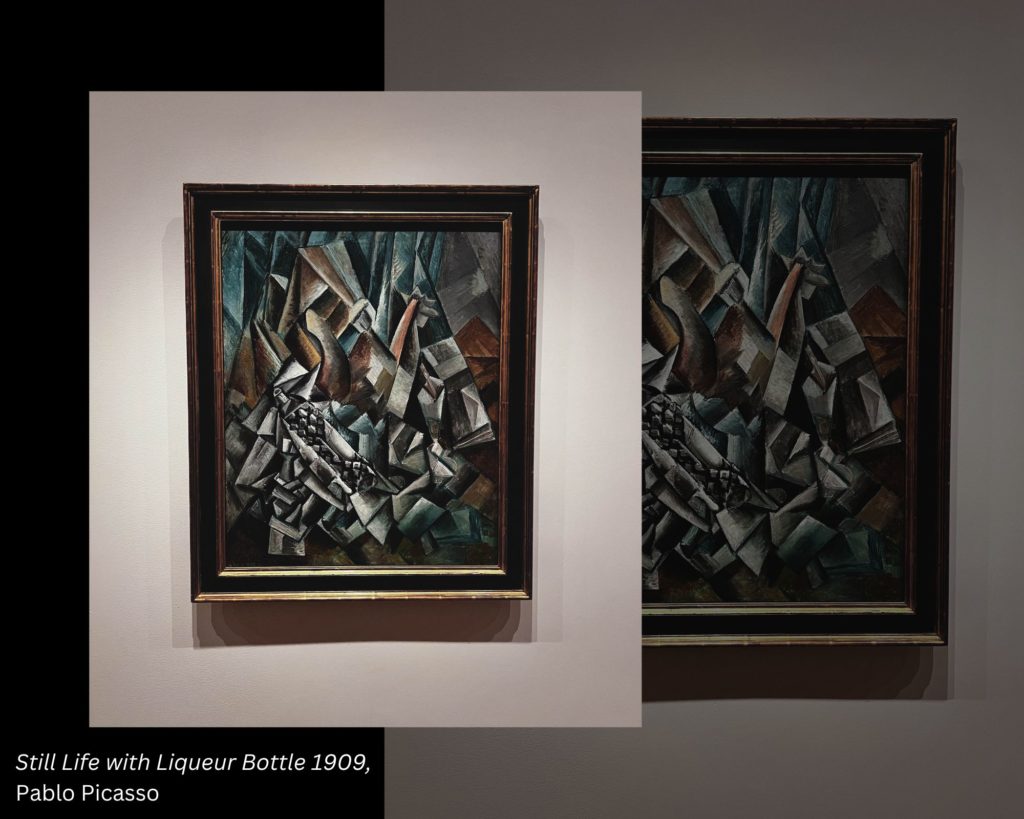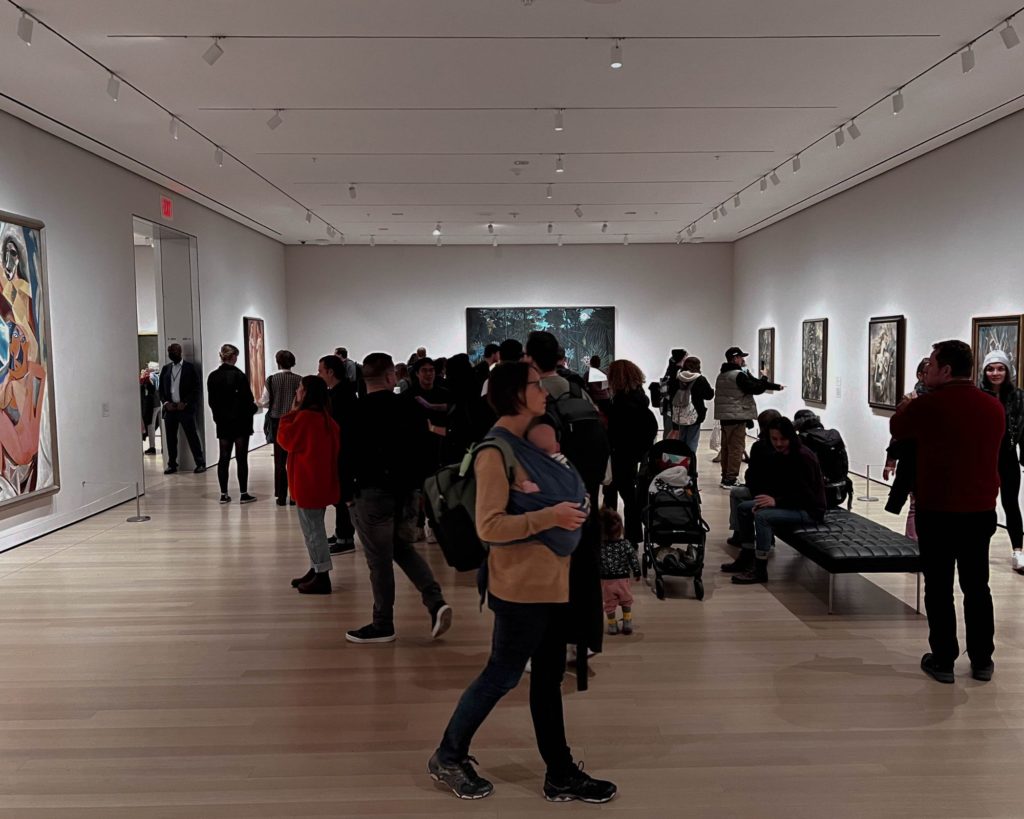“Long live Rousseau!” These words appeared on a banner decorating a party organized by Pablo Picasso in Paris in 1908. The guest of honor, Henri Rousseau, was a self-taught painter who, despite having been dismissed by the Paris art world, had captured the imagination of Picasso and his milieu. They saw in Rousseau’s work an authentic voice far more vital than what was taught in art academies.
United by a shared dissatisfaction with Western tradition, these artists looked elsewhere for inspiration for their own innovations. Rousseau conjured imaginary jungle scenes from sources such as popular magazines and visits to Paris’s botanical garden and zoo. Picasso and his peers looked directly to African sculpture and masks, which many of them avidly collected. This new awareness of African culture, imported into France via colonial channels, was pivotal in the formation of Cubism.
On view at MOMA, Floor 5, 503
Pablo Picasso was a Spanish painter, sculptor, printmaker, ceramicist, and stage designer who is regarded as one of the most influential artists of the 20th century. He was born on October 25, 1881, in Malaga, Spain, and began his artistic career as a teenager in Barcelona, where he quickly gained recognition for his innovative style. In the years that followed, Picasso went on to produce some of the most iconic paintings of the 20th century, including “Les Demoiselles d’Avignon” and “Guernica.” He died on April 8, 1973, in Mougins, France, at the age of 91.
